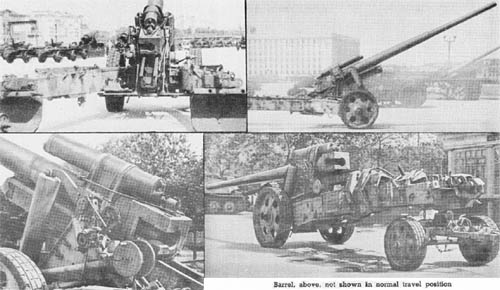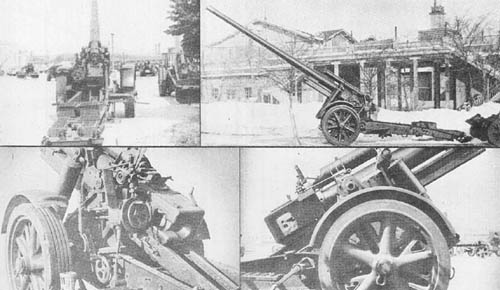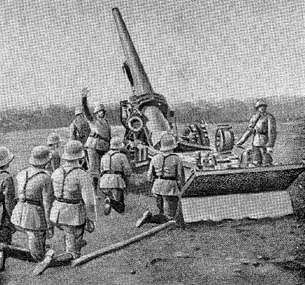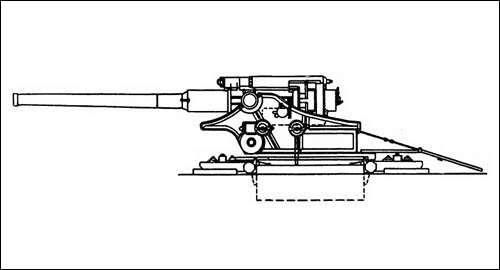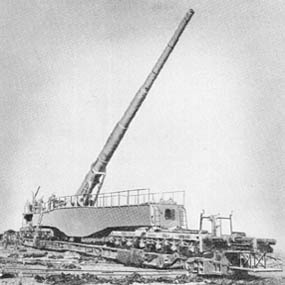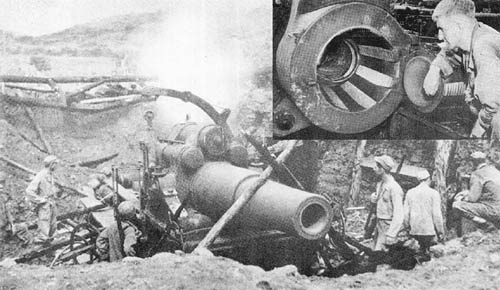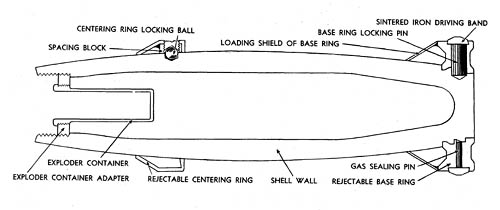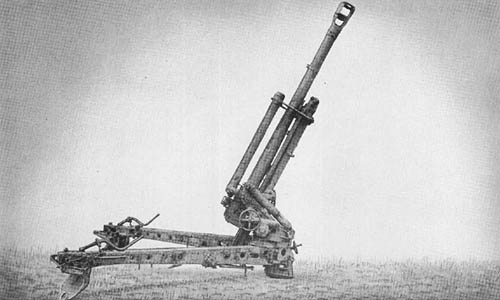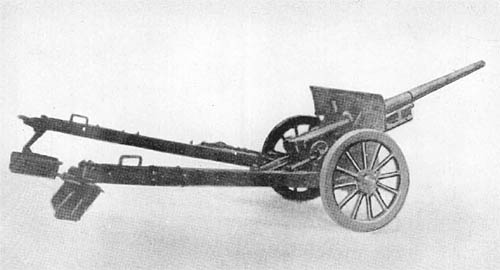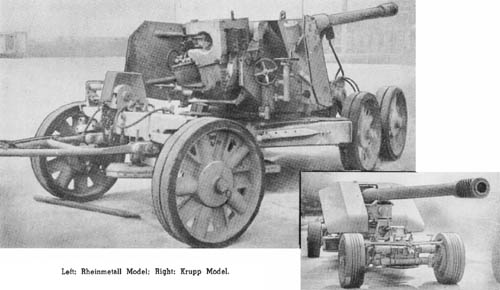
There are two versions of the 12.8 cm dual purpose, antitank/field gun, one manufactured by Rheinmetall and the other by Krupp. The Rheinmetall model has a slightly longer breech ring; the carriage has one rear axle and two front axles, whereas the Krupp model has one rear and one front axle. Reports indicatethat there may be a third version designated 12.8 cm K. 81.
The tube, of monobloc construction, is equipped with a cylindrical muzzle brake having perforations on both sides. The muzzle brake of the Krupp model is shorter and has the greater number of perforations. The manually operated breechblock is of the horizontal sliding type.
A variable hydropneumatic recoil mechanism is provided, the recoil and recuperator cylinder being carried within the cradle. Two hydropneumatic equilibrators, one on either side of the tube, compensate for muzzle preponderance.
The piece is mounted on a cruciform platform. The carriage, which incorporates torsion bar suspension, is jacked off the wheels in firing and, with the outriggers extended, a 360° traverse may be obtained. Elevating and traversing handwheels are fitted to both sides of the carriage, and a seat for the gunner is provided on the left.
A single shield is used with the Krupp gun, while the Rheinmetall version is equipped with a spaced shield. Both types, however, are angular in appearance and the sides are swept back towards the rear.
SPECIFICATIONS
| Rheinmetall | Krupp | |||
| Length of gun (including muzzle brake and breech ring) | 312 1/2 ins. | 299 ins. | ||
| Length of gun (including breech ring) | 277 1/2 ins. | 277 1/8 ins. | ||
| Length of chamber (from rifling) | 41 3/4 ins. | 41 3/4 ins. | ||
| Length of rifling | 219 1/2 ins. | 219 1/2 ins. | ||
| Overall length (traveling position) | not determined | 433 ins. | ||
| Overall width (traveling position) | 108 1/4 ins. | 98 ins. | ||
| Overall height (traveling position) | 81 ins. | 90 ins. |
German: p. 106.2 (August 1, 1945)
